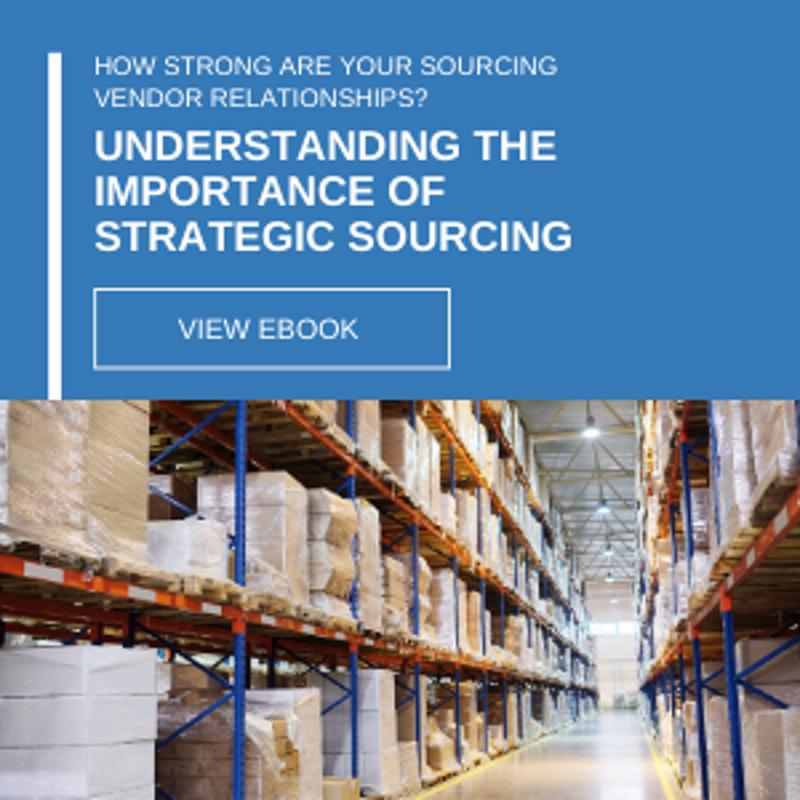-
Subscribe to Blog:
SEARCH THE BLOG
CATEGORIES
- Aerospace
- Asset Maintenance
- Automotive
- Blog
- Building Products
- Case Studies
- Chemical Processing
- Consulting
- Food & Beverage
- Forestry Products
- Hospitals & Healthcare
- Knowledge Transfer
- Lean Manufacturing
- Life Sciences
- Logistics
- Manufacturing
- Material Utilization
- Metals
- Mining
- News
- Office Politics
- Oil & Gas
- Plastics
- Private Equity
- Process Improvement
- Project Management
- Spend Management
- Supply Chain
- Uncategorized
- Utilities
- Whitepapers
BLOG ARCHIVES
- June 2025 (4)
- May 2025 (1)
- April 2025 (1)
- March 2025 (1)
- February 2025 (4)
- January 2025 (4)
- December 2024 (4)
- November 2024 (2)
- October 2024 (6)
- September 2024 (5)
- August 2024 (5)
- July 2024 (6)
- June 2024 (3)
- May 2024 (3)
- April 2024 (4)
- March 2024 (3)
- February 2024 (4)
- January 2024 (5)
- December 2023 (2)
- November 2023 (1)
- October 2023 (6)
- September 2023 (3)
- August 2023 (4)
- July 2023 (2)
- June 2023 (3)
- May 2023 (7)
- April 2023 (3)
- March 2023 (3)
- February 2023 (5)
- January 2023 (6)
- December 2022 (2)
- November 2022 (5)
- October 2022 (5)
- September 2022 (5)
- August 2022 (6)
- July 2022 (3)
- June 2022 (4)
- May 2022 (5)
- April 2022 (3)
- March 2022 (5)
- February 2022 (4)
- January 2022 (7)
- December 2021 (3)
- November 2021 (5)
- October 2021 (3)
- September 2021 (2)
- August 2021 (6)
- July 2021 (2)
- June 2021 (10)
- May 2021 (4)
- April 2021 (5)
- March 2021 (5)
- February 2021 (3)
- January 2021 (4)
- December 2020 (3)
- November 2020 (3)
- October 2020 (3)
- September 2020 (3)
- August 2020 (4)
- July 2020 (3)
- June 2020 (5)
- May 2020 (3)
- April 2020 (3)
- March 2020 (4)
- February 2020 (4)
- January 2020 (4)
- December 2019 (3)
- November 2019 (2)
- October 2019 (4)
- September 2019 (2)
- August 2019 (4)
- July 2019 (3)
- June 2019 (4)
- May 2019 (2)
- April 2019 (4)
- March 2019 (4)
- February 2019 (5)
- January 2019 (5)
- December 2018 (2)
- November 2018 (2)
- October 2018 (5)
- September 2018 (4)
- August 2018 (3)
- July 2018 (2)
- June 2018 (4)
- May 2018 (3)
- April 2018 (3)
- March 2018 (2)
- February 2018 (2)
- January 2018 (1)
- December 2017 (1)
- November 2017 (2)
- October 2017 (2)
- September 2017 (1)
- August 2017 (2)
- July 2017 (2)
- June 2017 (1)
- April 2017 (3)
- March 2017 (3)
- February 2017 (2)
- January 2017 (2)
- December 2016 (2)
- November 2016 (4)
- October 2016 (4)
- September 2016 (3)
- August 2016 (6)
- July 2016 (4)
- June 2016 (4)
- May 2016 (1)
- April 2016 (3)
- March 2016 (4)
- February 2016 (2)
- January 2016 (4)
- December 2015 (3)
- November 2015 (3)
- October 2015 (1)
- September 2015 (1)
- August 2015 (4)
- July 2015 (6)
- June 2015 (4)
- May 2015 (7)
- April 2015 (6)
- March 2015 (6)
- February 2015 (4)
- January 2015 (3)
CONNECT WITH US
Tag Archives: Sourcing
With all 50 states now in some phase of reopening, people all around the country are realizing what financial and health officials warned early on, back when the shutdown began in mid-March: Restarting the economy wouldn’t be as simple as flicking on a light switch. While business owners by and large understood that this would be the case, they’re nonetheless doubling their efforts to get operations as close to normal as quickly and as safely as possible in a bid to make up for lost time.
This is particularly the case among manufacturers, many of whom were sidelined by COVID-19 due to labor shortages caused by layoffs and a number of workers falling ill from the virus. As early as February, roughly 60% of manufacturing firms in the U.S. said they’d experienced disruptions as a result of the coronavirus, according to a poll done by Thomas Insights.
“Manufacturers were able to adjust certain processes to better cope with coronavirus-related disruptions.”
Understanding that even the best laid plans can turn sour due to forces beyond their control, manufacturers were able to adjust certain processes to better cope with coronavirus-related disruptions. For example, in instances where manufacturers couldn’t receive supplies from their main suppliers – due frequently to disruptions of their own – nearly 30% of manufacturers worked with alternative suppliers domestically, the Thomas survey revealed. Roughly the same share sought out overseas providers.
Employers taking precautions
Yet as eager as manufacturers are to resume operations at 100% of their typical capacity, health officials have cautioned companies not to go too fast for fear of a second wave. Organizations by and large appear to be taking this advice to heart. Indeed, nearly 70% of employees polled by Gallup in a recent survey said their employer was adopting new or more frequent cleaning practices throughout the facility by wiping down high-touch surfaces and handles more frequently, making liberal use of disinfectants and urging workers to wash their hands. Close to 60% noted their employers were providing personal protective equipment (PPE), like face masks, face shields and disposable gloves. Around 55% said social distancing measures were being enforced, requiring workers to stay at least six feet away from one another at all times.
The National Association of Manufacturers has chimed in on what is needed to get America back to work with their American Renewal Action Plan, which makes recommendations on what the government can do to make the transition more seamless.
“Bringing our $22 trillion economy out of our ‘induced coma’ is a Herculean task for the ages,” NAM said in a press release. “This challenge will require our policymakers to innovate and act boldly. This crisis will need the whole of the nation to unite in common pursuit. And, as with other consequential moments in our history, it will be manufacturers who make the difference to lead us forward—to secure the future health, safety and prosperity of all Americans.”

NAM made a number of suggestions for the federal government to consider to help manufacturers ramp up production. They included:
- Replenish the Strategic National Stockpile with medical supplies and PPE.
- Incentivize and reward domestic manufacturers that are able to meet PPE demands.
- Expand cargo capacity so suppliers can receive more raw materials to develop health solutions.
- Direct Equal Employment Opportunity Commission to provide guidance and instructions to employers for administering ongoing temperature checks and COVID-19 infection testing.
- Labor Department should urge employers to consider modifying work schedules so as to minimize the possibility of COVID-19 transmission.
Principles for successful reopening
Whether the government will implement these recommendations is for lawmakers to decide. In the meantime, here are a few suggestions from SafetyCulture for how manufacturers can reopen or ramp up production in a swift, yet cautious, manner:
Prioritize your people
If there are any takeaways from COVID-19, it’s the fact that individuals had very distinct opinions on the overall threat of the disease and the wisdom of the response. It’s important to pay heed to their feelings and to treat each individual on a case-by-case basis. If there are any deep-seated concerns that they have – perhaps about returning to work for fear of contracting the virus – get to the bottom of them and do so in an empathetic manner. In short, people should always come over process.
Consider a phased reopening
COVID-19 proved to truly be a one-of-a-kind pathogen; many aspects of it remain confusing and inconsistent. Similarly, there is no cookie-cutter solution to returning to work. Manufacturers may want to design a phased return-to-work schedule so if anything unexpected comes up, the staggered nature of the resumption of processes can account for unforeseen scenarios.
Adjust work spaces and stations
From health clubs to beauty salons to restaurants and more, just about every business has had to make some strategic adjustments to how equipment, chairs and tables need to be positioned to account for social distancing. Try to make some of the same shifts to assembly lines, conveyor belts and the like. Doing so not helps to increase productivity but can offer reassurance to employees who are concerned about transmission.
Rethink your pre-COVID supply chain management strategy
Due to the suddenness of the impact of the virus, many supply chain leaders have had to react to issues with sourcing, staffing, and production. Industry Today recommends five industry-agnostic principles for getting the supply chain back on track, including prioritizing safety throughout the supply chain, conducting fluid risk assessments, increasing supply chain visibility, diversifying geography (including production and sourcing), and staying focused on the future.
Maintain a sustainable, scalable spending structure
As the old saying goes, you have to spend money to make money, but for many organizations, the suddenness of the shutdown led to cash flow problems that may have been avoided with better planning and saving. Manufacturers must prioritize a resilient cost management system that can be sustained in times of uncertainty so expenses are addressed when faced with economic headwinds.
Some of the biggest adversities in life can wind up being turning points. There are a lot of lessons to be drawn from COVID-19, and at USC Consulting Group, we can help you apply them to your business and become better than ever. Our specialty is operational improvements and we can help your company realize greater efficiency by recognizing where the gaps exist and filling them in with the proper solutions.
Please contact us today to learn more how USC can assist either remotely or on-site.
For as much as the novel coronavirus has saturated the headlines over the last month or so, several aspects of the contagion remains shrouded in mystery. According to John Hopkins University, at least 141,600,000 people have been infected by the virus more formally known as COVID-19. Yet because it doesn’t always cause noticeable symptoms (e.g. fever, cough, runny nose, sore throat, chills, etc.) in those infected — the number is likely far higher.
Additionally, while the virus is believed to be originated from densely populated Wuhan, China, it’s unclear who was the initial carrier.
One thing is for certain: The communicable disease has caused massive amounts of uncertainty and brought significant instability to supply chains in a variety of industries.
The effects of the coronavirus are observable both on a macro and micro scale. Indeed, as reported by the Department of Commerce, the gap in foreign trade for goods and services narrowed considerably in January, down 6.7% from December to $45.3 billion. That was even lower than economists at The Wall Street Journal predicted, who anticipated a dip resulting from the disease’s spread. Imports also slipped during the 31-day period, falling by 1.6%.
“Stocks and bonds on Wall Street have tumbled.”
Stocks and bonds on Wall Street have also tumbled, with the Dow Jones Industrial Average falling more than 1,000 points on several trading days in early March, erasing much of the gains notched since 2020 began.
Meanwhile, according to the latest estimates from the Institute for Supply Management, the NMI Index in February reached 57.3%. While this is up 1.8% from the January reading, the rate of increase has slowed. Professionals in multiple industries attribute the pullback to the coronavirus, as more countries and companies adjust to enhance containment.
Richard Hayne, chief executive of clothing company Urban Outfitters, told The Wall Street Journal the virus has had an impact on virtually every aspect of the world economy in one way or another.
“The bottom line is COVID-19 supply chain uncertainty could create demand uncertainty as well,” Hayne said.
The impact on organizations with suppliers in China
Although an increasing number of countries, such as Italy, the U.S., Japan and South Korea, are taking actions to more effectively contain the virus, China has received the brunt of the fallout. According to the most recent estimates from Johns Hopkins University and the World Health Organization, roughly 80,700 people in China alone have contracted COVID-19 and approximately 3,000 have died.
“Roughly 80,700 people in China alone have contracted COVID-19.”
Combined with production reduction fueled by the tariff war, many companies had already been reducing development in China. Chip Bergh, CEO of Levi’s, said during a panel discussion at the Retail Industry Leaders Association that were it not for the rising tariffs that led to the pull back, its supply chain would have undoubtedly sustained a more direct hit than it has thus far, Supply Chain Dive reported.
Starbucks, meanwhile, is bracing for an adverse impact on earnings. In a letter to shareholders obtained by Restaurant Dive, the multinational coffee chain informed investors that it anticipates comparable stores sales in China will drop at least 50% in the second quarter, which would be the equivalent of a revenue loss ranging between $400 to $430 million. In February alone, comparable store sales slipped 78% on a year-over-year basis.
Product shortages
At a more local level, the effects of the coronavirus are hitting home in more ways than one, as increasing numbers of shoppers find empty store shelves in grocery aisles that are typically well stocked. As reported by the New Hampshire Union Leader, supermarkets and corner stores in certain portions of the Granite State are selling out of toilet paper, disinfectant wipes, and sprays. Unfortunately, New Hampshire isn’t the only state experiencing this issue. Localities across the U.S., Australia, Singapore, Canada, and more are experiencing toiletry and cleaning supply shortages.
Walmart, the world’s largest private employer and business on a revenue basis, is also in the midst of supply chain disruption. Casey Staheli, spokesperson for the retail giant, told the Union Leader that while disinfectants are hard to come by in some area facilities, he doesn’t think people are necessarily panicking.
“We continue to monitor the development of the coronavirus situation globally and are closely following official recommendations while working with our suppliers to understand and mitigate any supply chain disruptions,” Staheli said. “Providing customers with the products they want and need remains our focus.”

Curb the effects of COVID-19
Whether in food and beverage, retail, manufacturing, or virtually any other industry, there will likely be some form of impact from COVID-19, be it on the supply chain, overall output, or staffing. Here are simple strategies that can curb the effects:
Maintain good hygiene
Washing hands should always be a priority, but especially during cold and flu season. Encourage all workers to frequently and vigorously wash their hands with soap and water for approximately 20 seconds. Ideally, staff should avoid touching their face, specifically their eyes, nose or mouth — this can also help further reduce the chances of infection.
Disinfect surfaces
What surfaces in your facility get touched frequently? Whether they be handles, tables, knobs, or switches, consider washing them with disinfectant after each working day. Alternatively, or in addition to this, consider having your crew wear latex gloves. Be mindful of the surfaces that often go unchecked, like controllers, keypads, and computer hardware (keyboards, mouse, etc.).
Go over all possible scenarios
Like with any other communicable disease, the coronavirus will go away eventually, but no one knows when that will be exactly. In the meantime, consider the various supply disruption issues that may result over the next few weeks or months and how they will affect other elements of your day-to-day business operations. The best way of going about this is by maintaining a constant line of communication with your workers as well as suppliers so you can always be aware of supply chain challenges, and know the best way to respond. The focus should be on supply chain continuity — if you don’t have an existing continuity plan in place, working with experts may help you get your supply chain management back on track.
With over 50 years of experience, USC Consulting Group has helped hundreds of companies in a variety of industries overcome supply chain challenges — before, during, and after they occur. We can do the same for you. Please contact us to learn more and obtain the process improvements that can help you better navigate the unknown.
From foundation concrete to tile adhesive, the average house contains many different components. Building materials manufacturers are, of course, responsible for producing these essential supplies. Collectively, they are the backbone of the American housing market. These businesses are poised to continue their successes into the new year, a comforting sign for U.S. home builders, especially those who intend to accelerate operations in 2019 to bridge the inventory gap, according to research from the National Association of Realtors.
That said, building materials manufacturers will also face significant obstacles throughout the coming year. Here are a few of those challenges and how they might affect the organizations that form the foundation of the domestic housing market:
Wildfires
More than 52,300 separate wildfires burned through approximately 8.5 million acres in 2018, according to analysts for the National Interagency Fire Center. While neither of these figures surpassed historic highs, together they still paint a disturbing picture. Between 2008 and 2017, roughly 60,300 wildfires occurred annually, each one burning around 105 acres of land, but in 2018 the average wildfire claimed 163 acres. Suffice it to say, wildfires are getting worse, so their repercussions on related industries, such as building materials manufacturers, will continue to escalate.
This disturbing development is especially concerning to businesses in the forestry industry, which supplies the softwood and hardwood used in home construction. While reports from the Department of Agriculture show that forest inventories have steadily increased over the last seven decades, the recent intensification of wildfires threatens American woodlands and, by extension, the lumber suppliers that depend on them. Unfortunately, the NIFC believes that significant fire activity is likely to unfold over the course of 2019, meaning timber manufacturers will have to grapple with the threat of wildfire over the coming months and look for ways to mitigate the associated production risks.
America’s global trade showdown
When the Trump administration announced that it would increase duties on aluminum and steel imports back in March 2018, leaders in the home building space immediately criticized the decision. Randy Noel, chairman of the National Association of Home Builders, said the then-proposed tariffs would “translate into higher costs for U.S. consumers and businesses.” American Institute of Architects CEO Robert Ivy offered a similar sentiment, concluding that “inflating the cost of materials will limit the range of options [that architects] can use while adhering to budgetary constraints for a building.”
However, these voices failed to persuade the Department of Commerce, which enacted the tariffs in May. In the months since, material costs have indeed increased significantly, according to data analysis from the Associated General Contractors of America. Over the same span, the White House has issued additional import duty increases, further weighing down building materials manufacturers, their clients, and American homebuyers.
While America’s global trade conflicts have cooled as of late, President Trump has reiterated his desire to move forward with similar trade policies, NBC News reported. Enterprises in the building materials space could encounter new challenges linked to tariffs in 2019. Again, businesses in the industry will likely have to engage in some operational reorganization to reduce the bottom-line impact of any new duties.

A hot housing market
American home builders have struggled to meet demand in recent years, forcing buyers to participate in intense bidding wars, but developers are working hard to increase inventories, according to research from the U.S. Census Bureau. Residential permits, starts, and completions rose in 2018, signaling the arrival of a building construction boom. This activity is expected to continue into 2019, during which time single-family housing starts are forecasted to increase, analysts for the NAR found. Building materials manufacturers may find themselves fielding higher order volumes, even as sourcing gets more complicated and supplies dwindle.
Together, these developments pose serious challenges to organizations navigating the building materials manufacturing arena and may necessitate the implementation of new shop-floor techniques and tools. Here at USC Consulting Group, we have been helping businesses of all kinds adjust to new marketplace conditions, implementing on-the-ground strategies that lay the groundwork for success.
Connect with USCCG today to learn more about our work and how we can help your company prepare for the challenging year ahead.
An important lever for modern organizations.
Sourcing is a key component of your Supply Chain – perhaps the most important part. As companies are navigating an increasingly turbulent yet robust economic climate, businesses in manufacturing, mining and metals, food and beverage, and other industries are looking for ways to reduce raw material procurement spending and offset rising material costs. Faced with these challenges and demand outstripping capacity, purchasers feel an increased need for stronger vendor relationships.
That’s where Strategic Sourcing comes into play. By overhauling sourcing frameworks and opting for an integrated approach, enterprises can foster closer vendor relationships, reduce the total cost of ownership, and lay the groundwork for sustainable success.
Download our eBook: “Understanding the Importance of Strategic Sourcing” to learn more about strategies for dynamic supply chain sourcing.
Are you getting the most out of your current sourcing vendor relationships? Contact us today to discuss how to strengthen your strategic sourcing strategy.
What a time to be a private equity fund manager. According to Preqin, worldwide private equity holdings in 2016 reached a value of nearly $2.5 trillion. Private Equity liquid assets increased by $65 billion between 2015 and 2016.
Nestled amid that growth lies food and beverage, historically one of the more dependable performers in the PE portfolio. Investment banking and wealth management firm William Blair predicted that the number of M&A transactions in food manufacturing in 2017 broke records, toppling all other yearly totals in the past decade.
With that said, food and beverage acquisitions in the U.S. aren’t always the slam dunks they appear to be. When considering any acquisition, firms should always take the proper general precautions as well as those specific to the industry they’re targeting. What factors should PEs consider when deciding whether to invest in a food and beverage company?
1. Labeling regulations and court decisions
Class-action lawsuits involving food labels have rocked the food and beverage industry of late, and how appellate courts respond to this tumult might ultimately dictate how PE firms settle on their best bets for a profitable acquisition.
A recent report from the Institute for Legal Reform found that a few instances of possible misleading labels made up a majority of the litigation:
- Claims of “natural,” “preservative free” ingredients.
- Claims of “handmade” products or products “made in the U.S.” that aren’t.
- Fruit and beverage imagery on packaging to allegedly purport health.
- Slack fill packaging that includes extra space to protect contents but also bloats its appearance.
Any PE firm investigating a possible acquisition should examine any possibility that its targets will suffer from lawsuits, or that upcoming regulatory changes from the Food and Drug Administration will force its prospective holdings – and by default, the firm – to spend on shifting compliance. This includes a review of current and future packaging, labeling processes, sourcing relationships, etc., as well as location. The aforementioned study revealed that three-quarters of labeling-related federal litigation occurred in California, New York, Florida or Illinois. Another 10 percent occurred in Missouri, New Jersey and Pennsylvania.
2. Specialty food opportunities
These days, the size of an F&B business is not as important as growth opportunities within an industry niche. Big companies with nothing new to offer will not see as much favor as smaller companies with new products to offer the market or new value-adds that resonate with consumers.
But a new flavor that draws in a once untargeted demographic or an attractive superfood ingredient isn’t nearly as important as evidence of sustainability – in both production and demand. Is this change a long-term value or a flash in the pan? Does the company have the bandwidth to meet capacity increases? Are sourcing relationships for new products as beneficial as they could be? Answers to these questions and more will demonstrate whether a company has what it takes to earn your acquisition and subsequent investment.
3. Plans for direct-to-consumer model
Amazon’s acquisition of Whole Foods sent a message to food and beverage manufacturers and retailers alike: There’s no ignoring the disruption caused by the direct-to-consumer model.
Consumer packaged goods producers on the table for acquisition have likely spent the past few years in a defensive cost-cutting posture, hoping to reduce opex without compromising on quality and mild operational expansion. This may be the reason why PEs are eyeing these businesses to begin with.
Amazon/Whole Foods, however, represents an industrywide challenge of sorts. CPG companies, acquired or not, must formulate solid plans for evolving their products based on this market movement. Should they have these plans in place upon a visit from a hungry PE firm, that firm must weigh the quality of that strategy as a considerable part of their internal valuation. Put another way: If the food and beverage company has little to no plan for facing the Uberification of groceries, PEs must take note. It’ll mean passing on the venture entirely or expending resources to develop a strategy once the company is acquired.
Packaging is one such determinant. Innovation-minded food and beverage manufacturers are less inclined to worry about shelf appeal and more inclined to consider meal kits, cost-effective packaging designs built for shipping and perhaps even a change in portion sizes. These businesses, however, must support these plans with evidence of progress to win the attention of PE firms.
Of course, no acquisition is a sure thing. After all, PE firms specialize in transforming underperforming businesses. But if your organization has struggled with turning around an asset in your portfolio, contact USC Consulting Group today. Our operations management team will help you create a system for immediate and continuous improvement based on years of industry knowledge.
Recalls are on the rise in the food and beverage industry, but processors have the power to stem the tide by investing their time and energy into a renewed commitment to operational excellence.
Although recalls happen for myriad reasons, recalls related to undeclared ingredients remain a persistent threat throughout the sector second only to pathogen contamination, according to the Department of Agriculture Food Safety and Inspection Service. Between 2000 and 2016, 3 out of 10 recalls were the result of undeclared ingredients.
When businesses unwittingly fail to disclose the so-called “Big 8” allergens – milk, eggs, fish, crustacean shellfish, tree nuts, peanuts, wheat and soybeans – they expose trusting consumers to life-threatening dangers. So it’s no wonder why food and beverage companies will spend whatever it takes to avoid such risks. According to a study sponsored by the Grocery Manufacturers Association, a food industry trade group, the average cost of a single recall is $10 million in direct damages. This figure does not include indirect losses ranging from settlements from consumer class-action litigation, long-term reputational damage to the brand in question or issues faced during the recall recovery process, such as insurance rate increases and soured relationships with suppliers and vendors.
What can your food or beverage processing plant do immediately to prevent recalls related to undeclared allergens from wreaking havoc on your bottom line, customer loyalty and continued success?
Review labels against ingredients
Labeling errors, according to the aforementioned USDA FSIS study, represented 63 percent of all Big 8 recalls between 2005 and 2015. Combined with ingredient errors – formulation changes without updated labeling, etc. – the two caused three-quarters of all reported Big 8-related recalls during that time.
As such, food and beverage companies should perform a preemptive audit of all product labels by verifying them against actual ingredients. Stakeholders in this effort ought to pay close attention to ingredients that recently underwent reformulations or arrive at their facilities already processed. Although processors may have removed one allergen by way of a substitute, they may then inadvertently introduce new allergens or other contaminants. Other areas to address include:
Label language
Because the Food and Drug Administration does not preapprove food labels, it’s up to the food and beverage industry to keep up with current labeling regulations. Whether an organization chooses the phrase may contain milk or processed in a facility that also processes milk is the discretion of the labeler, provided it accurately portrays operations. But remember: No overly cautious language on the label compares to adhering to good manufacturing practices.

Subingredients
Companies must break down all ingredients listed on their labels to their most basic levels in order of predominance by weight. For example, the FDA recently sent a warning letter to a bakery in Massachusetts for not itemizing the sub-ingredients in its “Natural Sourdough Starter.” The bakery also included “love” as an ingredient. While a nice attempt at out-of-the-box marketing, there is no creative license when it comes to properly labeling ingredients. Be clear and precise.
Outsourced supplies
Third-party manufacturing is an excellent method for preventing cross-contamination at a facility, but it does not automatically free the processor from liability. To know for sure what substances all ingredients contain, food and beverage companies must establish good internal process controls supported by transparent supply chain relationships.
Investigate areas of possible incidental contact
Food and beverage plants should do everything in their power to isolate segments of their production lines where risk of incidental contact are high, not to mention any other areas unrelated to production where such accidents can occur.
But isolation isn’t limited to placing physical barriers between operations with and without allergens. These facilities also need to take a behavior-minded approach to process control:
- Target rework: Every time allergenic materials are handled, the risk of contamination increases. Employee must receive comprehensive training on how to perform processes involving allergens, but companies should also develop a standard strategy allergen-specific rework just in case.
- Use lockouts: Follow lockout/tagout procedures for any equipment that comes in contact with allergenic ingredients until staff can properly sanitize it. Similarly, establish strict rules about single-use protective materials, such as gloves.
- Visualize dangers: Create a system for drawing attention to all allergenic materials on the shop floor and equipment that regularly comes in contact with allergens.
Strengthening the resilience of your food or beverage company against allergen-related recalls may come at a costly premium if your teams don’t know how to roll-out initiatives efficiently. Talk to the operations management experts at USC Consulting Group to learn more.
Who knew a little label could cause such a big commotion? Food and beverage labels in the U.S. will become battlegrounds over the next year as the industry reinvents itself in the wake of a new political regime and shifting consumer expectations. How might these changes impact how manufacturers operate?
Recent regulatory rules under the Trump administration
Perhaps the most seismic change of late regarding how all businesses in the U.S. will be regulated, President Trump recently signed an executive order requiring the removal of two federal regulations for every one instated. Should this one-in-two-out rule hold, food and beverage producers may find themselves altering not only how they label food but how they produce it.

A new president means a new approach to food and beverage regulations.
For example, last summer then-President Obama signed a bill mandating the use of labeling for genetically modified foods. However, the bill allowed food and beverage companies to use a QR code on their products instead of an outright designation identifying GMO products. Currently, neither side of the issue is wholly content with the final decision, so the matter will likely come up again for review or restructuring in the near future. But now under the Trump administration, further discussion may have to include a selection of regulations for the proverbial chopping block.
Although Trump’s regulation-loosening executive order may make things easier for affected businesses and their abilities to produce cost-effectively, there’s no arguing these companies will already require lean, streamlined operations capable of flexibility to benefit from changes as they come while still upholding safety and quality standards. And with consumers more focused than ever on what they eat and how it’s processed, labeling could be at the heart of this volatile transition period.
New labels provoke conversations regarding sweeteners
In mid-2016, the FDA updated the ubiquitous nutritional label to both emphasize things consumers should be aware of and include data that had been left off in the past.
According to the FDA website, two changes in particular could greatly affect producers of sugary foods and beverages. First, labels must now include a “declaration of grams and a percent daily value (%DV) for ‘added sugars.'” Second, products containing between one to two servings per package must drop down to one and adjust data accordingly, since many people consume these goods in one sitting.
Most manufacturers will have until mid-2018 to comply. Others that make less than $10 million in annual food sales have until mid-2019. Presumably, many in both camps will spend time this year planning how best to reduce added sugar levels or what alternative sweeteners they could feasibly substitute without altering taste dramatically. Either way, these food and beverage producers will need to rethink raw materials sourcing and chart out new partnerships with suppliers.
This could prove difficult for popular sugar alternatives such as stevia. In early June 2016, U.S. Customs and Border Protection seized shipments of stevia from China because of a ban on imports produced through forced labor, according to Fortune. In giving up straight sugar, F&B manufacturers may be forced to seek out a more transparent means of managing its supply chain and a long supplier vetting process. These could prove excellent opportunities to simplify these processes as best as possible for all raw materials involved in production.
Home remodeling can serve utilitarian purposes as well as personal aesthetics. Because of this, market success for businesses that produce kitchen cabinets, bathroom fixtures, doors, and windows is highly contingent on consumer trends. Let’s examine a few recent consumer developments that could affect cabinetry production.
Is housewares rightly hesitant to dive into millennial marketing?
Strong growth in the housewares sector typically aligns with growth in the housing market. After all, if people buy homes they’re more likely to spend on appliances and fixtures. According to the Kitchen Cabinet Manufacturers Association, cabinetry has seen steady sales increases over the last two years, 8.5 percent since 2014. KCMA cites a recovering housing market as a remarkable catalyst for those gains.
That said, some naysayers will point out low home buying on behalf of millennials as grounds to be wary. After all, if population estimates from the U.S. Census Bureau hold true, millennials surpassed baby boomers in size in 2016, making them the largest and perhaps most lucrative consumer opportunity for businesses. However, as home buying rates continue to stay low among younger consumers, how can manufacturers in the housewares sector expect to justify innovation tailored toward the next generation?
The truth is, everyone loves a bargain – increasing operational efficiency at your facility could ultimately benefit unit pricing in a way that’s beneficial to distributors (and thus customers) without impacting profit margins. An excellent method for innovating that will pair well with this idea is investment into simple, perhaps unfinished, contemporary designs made from eco-conscious materials like recycled particle board or low-VOC finishes and adhesives. Going au naturale also reduces processing requirements for manufacturers.
Productivity gains through equipment require training and proactive maintenance
Although housewares continues to see sales growth – even though market factors could, at any time, pull the decorative Oriental rug out from under its manufacturers – businesses should not invest in productivity-centered capital-intensive assets without first allotting proper consideration for processes which bolster equipment reliability. With so much riding on customer service these days, unforeseen complications could do a number on a business’s ability to meet expectations.
Paul Downs, founder of Paul Downs Cabinetmakers, shared his cautionary tale regarding asset management with The New York Times back in 2011. His lesson bears repeating. Downs was able to integrate a high-capacity splicer and veneer-gluing machine onto his production line and increase monthly sales by about 42 percent, but only after learning how to overcome complex setup issues and convincing operators of their importance, which took considerable time and effort. But in the end, it was obviously worth it.
No investment happens in a vacuum, an integration may be a much higher hurdle than sticker price. So, cabinetmakers thinking about redirecting their recent windfall toward new assets, establish an asset management and implementation plan first, lest your purchase get the better of you.

New cabinet styles could disrupt materials procurement for cabinetmakers.
Mismatched cabinetry could impact portfolio and materials
Uniform cabinetry is passe. According to the Woodworking Network, many homeowners shopping for cabinetry today express interest in mixing different styles of cabinets in their kitchens. Different materials, wood species/products, stains, even colors – everything is fair game, and from a manufacturing perspective, such boundless variety could have a noteworthy impact on not only production, but inventory management.
With every product portfolio expansion, manufacturers can expect additional time spent on changeovers unless facility supervisors drill best practices:
- Create/augment a standardized system for equipment changeover
- Train all equipment operators on the same methodology
- Emphasize reasons the standard trumps alternatives
- Collect and analyze operational data to confirm adherence
Furthermore, with more customers picking and choosing their own cabinet styles product by product, manufacturers ought to anticipate a slight leveling between materials needed to produce top sellers and more exotic offerings. Theoretically, this model for change follows the same course as other home remodeling trends like “accent walls” in the paint industry. As more consumers follow the fold and spice up plain-colored rooms with a splash of color on one wall, hardware stores stocking paint will see customers reach for smaller cans of neutral paints and more colorful options that hadn’t sold well in the past. Thus, demand shifts.
But while many paint producers have passed the challenge onto their distributors by way of in-store paint mixing stations, cabinetry cannot – especially when customers aren’t just mixing colors, but base materials. Popular cabinetry woods like oak and cherry may see slight reductions in demand while other less popular materials receive slight boosts. It’s up to manufacturers to consult inventory specialists to see how procurement should respond, not just to wood, but to bonding and curing agents as well.
Cabinet manufacturers, as well as other housewares segments, should always consider how the latest interior design trends might impact their operations down the road and work to preempt adverse effects to customer service and line efficiency.
Six Sigma hates waste. If a manufacturing plant plans on getting any leaner, its executives, managers, and supervisors should be on the prowl for areas to streamline workflow and cut out unnecessary steps.
Depending on the industry in question, inventory may play a vital role in on-site operations. Whether inventory is used for holding spare parts for the company’s most important assets, managing SKUs awaiting completion or transportation, or storing raw materials integral to the manufacturing process, inventory management can be pivotal to efficiency.
Inventory can also, however, become a breeding ground for waste, and the stresses of an unkempt inventory can permeate throughout disparate operations, creating backlog, downtime, and unmet expectations. Let’s take a look at a few examples of how an inventory without proper curation can lead to all different kinds of waste.
Before we go any further
Though it may seem rather obvious, inventory management really only impacts industries that actually maintain a comprehensive inventory. With the rise of just-in-time supply services and kitting, many inventories across a number of different industries have been thoroughly rationalized to the point where harping on them any further would be, in a word, pointless. Sure, organization throughout a company is an ideal worth promoting, but further investing time, money, and energy into an inventory after taking certain measures will not provide an ample return.
According to a study on the link between operational performance and inventory management published in the Journal of Operations Management, only two-thirds of industries investigated experienced substantial gains with a leaner inventory. As the authors of the study suggest, understanding the role inventory plays in an individual business and measuring how deeply ingrained it is in ancillary processes. Otherwise, companies attempting to adopt a leaner mindset will expend resources unnecessarily, resources better spent on making actionable changes in other areas where they’re needed. Managing inventory waste for some will merely be a surface adjustment, but for others, it can clue them into subcutaneous operational deficiencies that can return serious value if unearthed.
Waste in waiting
In an interview with IndustryWeek, Frank Hill, director of manufacturing business development for Stratus Technologies, said 3 out of 10 manufacturers run into unplanned downtime, the number of large downtime events are on the rise, and each one costs roughly $17,000 to navigate. With so much at stake, it’s no wonder why manufacturers push to keep their assets continuously operational.
That said, downtime for many in the manufacturing sector only pertains to failed assets or big-time disruptions. That isn’t always the case. Downtime can also include any time spent not performing the value-added tasks at hand. Machinery can be fully operational, employees can be at the ready, but downtime can still occur. Rooting out the culprit might lead lean teams right to inventory.
Builds or repairs might require components held in inventory, which means employees tasked with these duties will need to locate them as fast as possible to complete their respective jobs. Without a regimented, intuitive system for hunting down these things, workers waste time between tasks. While it may only be a matter of minutes, these gaps in performance add up incrementally. To prevent these undercurrents of waste from siphoning successes, ask: What systems or procedures would a manufacturer have to enact to ensure its employees find what they need exactly when they need it?

Moreover, in the event of a large-scale downtime event, what sorts of low-tech, high-value activities can employees perform until they can return to their work? Manufacturers should develop fail-safe measures against wasted opportunities. In fact, so long as it integrates well with a company’s downtime objectives, inventory management – like cleaning, organizing, and shelving – can be something employees attend to during the wait to return value to the company during a downtime deficit.
Waste in damaged materials
Shrinkage is like a monster with many heads – a single swipe of a sword might not be enough to take the beast down. However, everything has a weakness, and for shrinkage, it may reside in catalysts entrenched in peripheral operations and processes.
Root cause analysis might confirm shrinkage directly correlates with administrative shortcomings or underutilized metrics during the procurement stage. For instance, if a manufacturer’s inventory is lousy with a specific type of fastener, it could be because orders for that component don’t legitimately reflect updated supply/demand data. As such, administration has been placing orders for parts employees don’t need and already have too many of. Additionally, supplier-manufacturer relations could also play a role in waste. If a particular component is rare or difficult to produce, suppliers may pigeonhole manufacturers into procuring more than they need. Without an effective system in place auditing and monitoring said inventory, manufacturers could be overspending upfront.
So how can manufacturers determine if their shrinkage is bad enough to devote serious resources toward? According to a study conducted by Supply Chain Visions and the Warehouse Education and Research Council, it’s all a matter of finding what percentage of an inventory is lost to shrinkage. The average inventory sheds between 0.046 percent and 0.07 percent of its contents to shrinkage, while a score of less than 0.005 percent would be optimal and industry-leading. If, however, a manufacturer’s shrinkage hovers above 1.46 percent, they stand to reap the most out of reining in its inventory.
Waste in avoiding the real problem
Similarly to the aforementioned section, inventories overburdened with spare parts could signal manufacturers aren’t addressing major issues with their on-site assets. If inventories must maintain an above-average stock of replacement components for subassemblies constantly wearing out, supervisors have essentially made a habit out of treating the symptoms and not the disease.
Instead of worrying about additional spare parts, manufacturers should instead focus on the reasons why their valuable assets aren’t performing as they should. Tracking down the primary cause of even the most minor malfunctions will not only save on costs related to managing spare parts, but also completely eliminate the downtime required to replace the worn out component, returning considerable efficiency back to the manufacturer who takes the time to truly investigate.
Where do supply chains need the most oversight? How can enhanced analytics maximize efficiency and help these areas operate more smoothly?
Big data applications in an asset-intensive industrial setting like a manufacturing plant or an oil refinery need no introductions. Business leaders in these sectors have long awaited the ability to monitor on-site equipment performance in all its granularity, measure it against historical data quickly, and aggregate unstructured gigabytes of data from disparate machinery into easily interpreted and configurable dashboards. Now that it’s readily available to them, the whole thing feels like a homecoming.
Yet, many organizations have been unreasonably reluctant to carry over big data analytics into supply chain management, arguably an area in every business particularly subject to an abundance of complexity. According to an Accenture study, although 97% of executives are aware of the benefits big data analytics bring to supply chains, only about 1 in 6 had such measures in place as of 2014.
Smarter supply chains cut costs for everyone involved, supplier and client alike, so long as partnerships develop and act on the right metrics. Where do supply chains need the most oversight? How can enhanced analytics maximize efficiency and help these areas operate more smoothly?

Use data to deploy supply chain vehicles safely and cost-effectively.
Fleet Management
Businesses concerned with fleet metrics tend to focus primarily on the KPIs directly related to spend, such as cost per mile, fuel efficiency, and even controlled vehicle re-marketing. However, there’s something to be said for stretching analytics viewpoints to include long-term value adds instead of “pinching pennies” in the short term.
Condition-based maintenance programs, for instance, typically utilize complex data sets to determine if and when vehicles need servicing. As businesses switch to “just-in-time” inventory management models, the importance of fleet availability increases, as does risk. A decommissioned truck or van not only places immediate revenue in jeopardy from a customer service perspective. It also usually requires expensive emergency repairs and may even compromise driver safety in certain circumstances. As such, supply chain and fleet management should coordinate on data-driven oversight to keep transportation operational throughout its life cycle.
Weather
When winter storm Juno froze New York in 2015, analysts estimated its economic toll would cost businesses between $500 million to $1 billion. A single storm can do a number on service and profitability, which is why any supply chain management strategy would be incomplete without weather forecasting.
“Businesses should use weather forecasting as a springboard for supplier or 3PL negotiations.”
That said, nothing is more predictably unpredictable than meteorological activity. Knowing a storm is on its way doesn’t really do much to prevent or preempt its impact to a substantial degree. Businesses should use weather forecasting as a springboard for supplier or 3PL negotiations. Business leaders should leverage data to inject flexibility into service contracts beneficial to both sides, absolving all parties of blame when weather is at its worst and hopefully securing carrier engagement/satisfaction in the process.
Decision-makers should also develop robust in-house policies for operators, drivers and warehouse crews diverse enough to accommodate any eventuality. That way, workers know exactly what is expected of them when different phenomena occur. Heavy rain? Drivers should execute safer, more defensive driving strategies on the road as defined by supervisors. Snowfall shuts down a major thoroughfare? Warehouse pickers should switch over to other value-add duties like cleaning or inventory management to avoid labor cost waste.
Demand Forecasting
This one is almost so obvious, it goes without saying – supply chain management hinges on customer demand, where it will be tomorrow and how quickly businesses can respond to it.
What might not be nearly as evident is the effect misaligned supply/demand relationship has on the business beyond supply management, in the form of surpluses, steep product or service markdowns, and inadequate customer service. Businesses shouldn’t merely turn their attentions to the metrics supporting best practices, but set notifications and alarm bells on KPIs that may forewarn them of potential supply chain mismanagement while it’s still able to be resolved.










